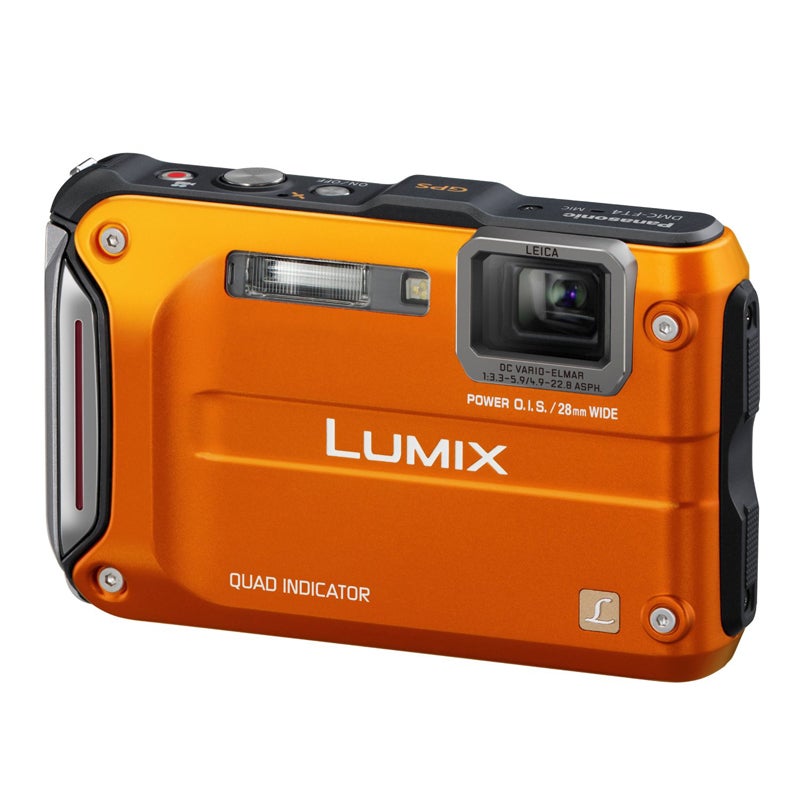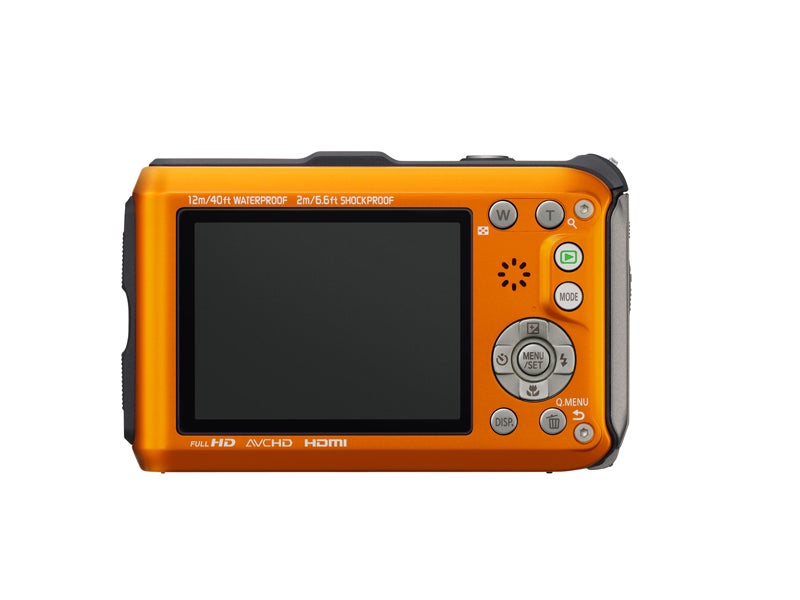With a specification laden with lifeproof capabilities and high-end Panasonic imaging tools, the FT4 promises to be one of the best tough cameras on the market: but how does it fare when put through its paces?
Panasonic Lumix FT4 Review
Panasonic Lumix FT4 review – Features and Design
Matching rugged credentials with a level of usability you’d expect from a normal compact camera is a difficult trick to pull off. Quite often manufacturers will achieve the former at the expense of the latter, or even at the sacrifice of image quality. One range of lifeproof compact cameras that in recent times has manage to combine a lifeproof specification and good image quality, while retaining a level of usability akin to a standard compact camera, is Panasonic’s FT series.
The FT4 is the latest model to sit at the top of this range and features characteristic tough credentials. The compact can withstand water to a depth of 12m, will survive a drop from a height of up to 2m, will keep working at temperatures of as low as -10C and is also dustproof.

It’s not just the tough credentials that will appeal to the active photographer, as the FT4 also features a range of indicators aimed at assisting and budding explorer. The FT4 features a ‘Quad Indicator’, combining GPS tagging, compass, altimeter and barometer, from which data can be displayed on the model’s LCD screen for reference. The GPS functionality is improved upon with respect to previous models and now not only tags latitude and longitude, but also features landmark information from over a million locations for easy tagging.
The good news is that the tough specification and various accoutrements tailored to the outdoorsy photographer are accompanied by an imaging specification to match many a conventional compact camera. The model features a 1/2.33in CCD sensor with a 12.1MP effective resolution that is accompanied with Panasonic’s Power OIS stabilisation technology. As is often the case with Panasonic compacts, the FT4 features a Leica-designed lens complete with a 4.6x optical zoom covering a focal range of 28-128mm in equivalent terms. One disappointing feature in previous FT models, although likely a compromise due to the compacts lifeproof credentials, was the 2.7in, 230k-dot LCD screen – this is towards the low end of the LCD scale of quality and, somewhat unfortunately, it remains.

The FT4 boasts HD movie capture at a resolution of 1920 x 1080p, with movies captured in either AVCHD or MP4 format. One feature that will be welcome to those wanting to shoot video in possibly difficult conditions is that the FT4 features a dedicated video capture button on the camera’s top plate.
A host of capture modes are present on the FT4. An Intelligent Auto setting features, choosing from a range of scene modes to suit the subject, whilst photographers can select from these scene modes themselves should they choose. A welcome introduction to the FT series with the FT4 is new Program and Manual shooting modes which allow the photographer greater control over the camera settings. One further new shooting mode is a Time Lapse Shot – the setting allows the photographer to capture images automatically and in a timed sequence, with a view to combining them in the future. This Time Lapse mode, although good in theory, is limited to a maximum duration of just 60 shots at a minimum interval of a minute.
If you’re familiar with the design of previous models in Panasonic’s FT series, the design of FT4 will bring few surprises. In fact, there are very few signs that the FT4 is in any way different to the previous model in the range, the FT3 – the model bears the exact same dimensions as its predecessor and, accordingly, the same design. This isn’t necessarily a bad thing: as mentioned previously, one of the key facets in the design of a rugged compact is that it remains useable in difficult conditions, and this is something the FT4 achieve. Function buttons on the rear of the camera are all pleasingly raised and easy to operate with cold or wet hands. The same is true of the shutter release button on the camera’s top plate, although unfortunately the power and dedicated video capture buttons are embedded in to the camera, most likely to prevent accidental operation.
The body is not the lightest of compacts, although this weight definitely gives the FT4 a solid and reliable feel that will no doubt stand up to a reasonable battering. A raised section to the right hand side of the camera’s body helps in providing an assuring hand grip, although the slick stainless steel finish of the body could benefit from some form of contouring to provide a surer grip.
The model’s menu system is somewhat on the simple side, although once again this is no doubt by design to cater for simple operation in difficult conditions. Basic shooting functions are easily adjusted, with more advanced settings easily located.




